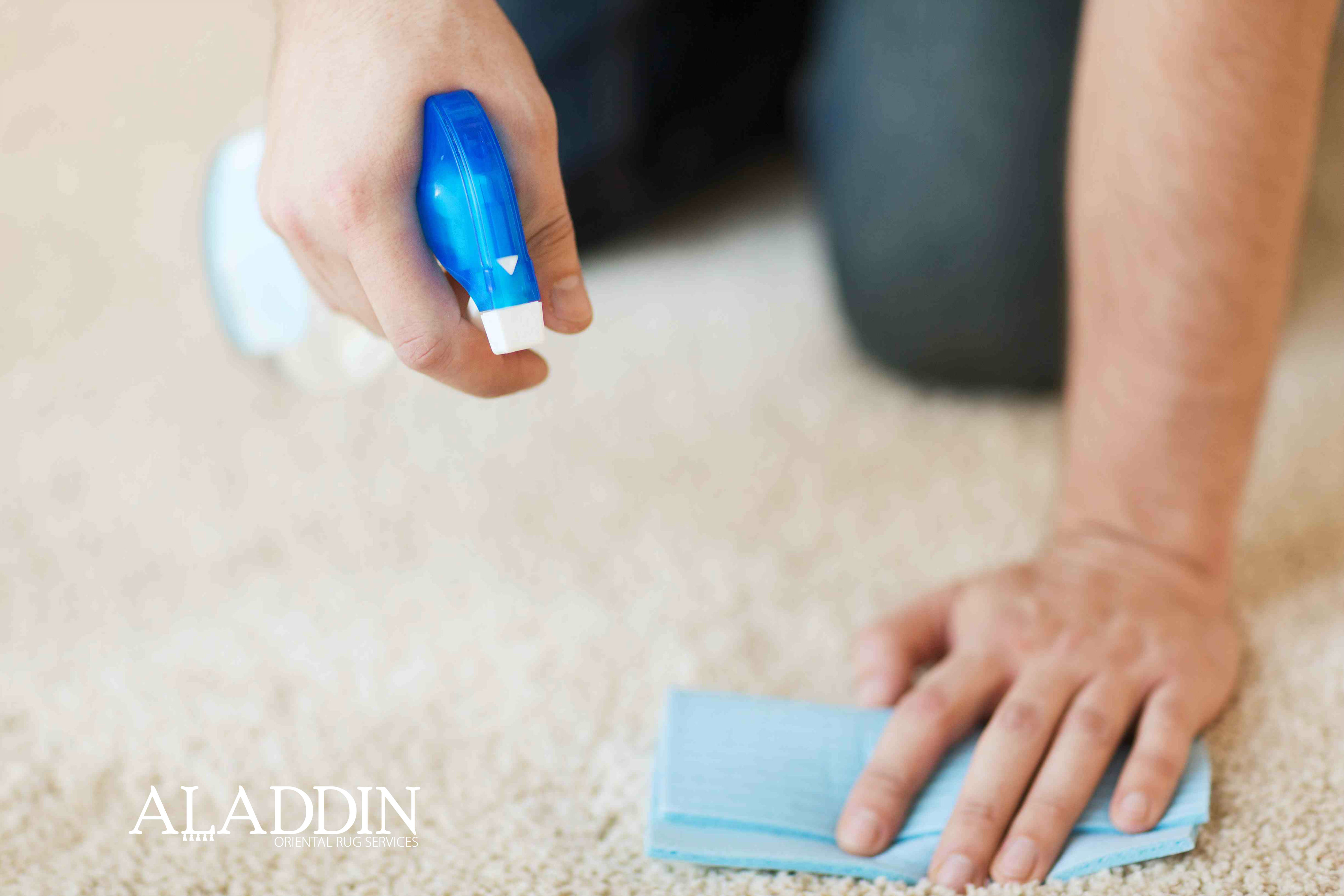Some people think that when rugs need to be cleaned they can just beat them against a hard railing to get rid of all the dust. However this isn’t the best approach because it doesn’t provide the most thorough clean. Most fine rugs are made of wool. Wool not only acts as a warm surface, but also as a filter for removing dampness, dust, and bacteria from the air. In many ways, a wool rug or carpet acts as an air filter. Unfortunately, that makes them susceptible to becoming quite dirty over time – so dirty that a simple beating won’t work at all to clean it.
How to know it’s dirty enough to warrant a cleaning
If you want to check how dirty your rug is and if it needs a professional clean, pick up a corner of the rug and kick it’s underside.. If dust and wool fiber fly out don’t worry, that’s normal. But if a massive cloud flies out – it’s probably time to get your rug professionally cleaned. Another cleanliness test can be conducted by rubbing the rug’s fabric f or 10 to 15 seconds, and if your hand comes off dirty, it certainly needs a clean.
Cleaning Methods
The best way to clean is by placing a rug in a utility room or area where you don’t mind getting dirty. A somewhat clean outdoor area is the best. First, vacuum both sides of the rug. Then shampoo the rug with cool water and soap – the best kind is a rug shampoo. Never use ammonia or a harsh detergent. Always test the shampoo against any color run in a small area of the rug first. Then use a soft long hair brush or a firm sponge that doesn’t shed. Brush or rub it against the rug in the direction of the weave when it’s fully covered in soapy water. Wash fringes as well, and always brush them away from the rug. Then rinse off the rug with water – you can use a window squeegee to get out all the excess water – but always do so in the direction of the weave. Lay out the rug flat to dry, and once the exposed side feels fully dry, flip it over to allow the other side to dry. If the rug is way too stiff, brush it gently or vacuum it lightly. If the stain still remains, take it to a professional rug cleaner.






